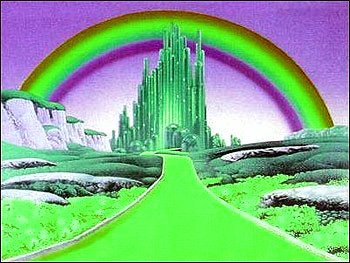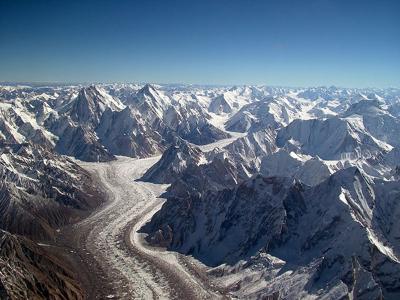Canada...where i live
I live in BC canada, and we do have summer. It is very cold in winter fall and beginning of spring, but today, its summer and it was 31 degrees Celcius which i believe is around high 70s in ferinhight (spelt it wrong?) thanks ;)
Barry's Response - It's true. Here in Canada, where I live too, we can have pleasant summer weather. Most people don't mind the heat, but it's fine. The 31 you mentioned above is about 88°F. Thanks for the comment.
The climate in British Columbia (BC) varies as much as Canada's. Two things cause this phenomenon. The first thing being the proximity to the Pacific Ocean, which is normally upwind. In the interior, there are high mountains and deep valleys.
Most coastal regions have a nearly Mediterranean climate with little extremes in summer or winter. However, keep in mind that the entire BC mainland, including Vancouver, lies north of the 49th parallel. Victoria, the capital, sits on an island at 48.4°. It rains a lot here, especially in the winter.
Winters in the mountains are colder and snowier. The interior valleys, like the Thompson and Okanagan valleys, which house Kamloops and Kelowna, are very dry. Köppen Bsk typically has cold winters, but what snow they do get lasts for a few months. They are also amongst Canada's favourite vacation spots during the hot dry summer months.
The rest of the province falls between these three extremes. Additionally, the northeast region of BC is north and east of the mountains, far from the ocean and bears a geography and climate that are more like those of the prairie provinces: Alberta, Saskatchewan, and Manitoba. Fort St. John is the biggest city in this region of BC.
Search this site for more information now.
As the largest province in the west, British Columbia is renowned for its diverse range of climates and microclimates as a result of its vast geographical expanse and complex topography.
We can find different climate zones in the province, each with different weather patterns, temperature ranges, and precipitation levels. BC has a variety of climates and microclimates:
- Coastal Rainforest Climate: The coastal regions, including Vancouver Island and the Lower Mainland, have a mild, wet climate. The Pacific Ocean influences these areas, so they have mild winters, cool summers, and plenty of rain. A coastal rainforest is characterized by lush vegetation, towering trees, and a variety of wildlife.
- Mediterranean climate: Some coastal areas, like the southern Gulf Islands, have Mediterranean-like climates. The winters are mild and wet, and the summers are warm and dry. Mediterranean plants like arbutus, lavender, and olive trees dominate the vegetation, which gets less rain than coastal rainforest regions.
- The interior of BC has an interior continental climate, including the Okanagan Valley, Thompson-Nicola, and Cariboo. They enjoy hot and dry summers, especially in Kamloops, and winters are cold and snowy. Temperatures have extremes, and precipitation levels are lower than on the coast. They have many vineyards, orchards, and semi-arid landscapes in the region.
- Mountain Climate: Mountainous areas, like the Rocky Mountains and Coast Mountains, have cooler temperatures and more precipitation. Elevation decreases temperatures, and precipitation, including snowfall, increases. Numerous outdoor activities are available in the mountain regions, including alpine ecosystems and glaciers.
- Northern Boreal Climate: Northern British Columbia, including Fort Nelson, the Peace River region and northern Rockies, has a boreal climate. Long and cold winters and short and cool summers characterize these places. Moose, caribou, and bears live in the region's forests, muskeg bogs, and muskeg bogs.
BC also has a variety of microclimates due to factors like topography, proximity to water bodies, and elevation changes.
Here's a few examples:
- As a result of its sheltered location and fertile agricultural land, the Fraser Valley has a milder microclimate.
- Columbia Valley in the east Kootenays has a microclimate with warmer temperatures, making it perfect for vineyards and fruit trees.
- Because of the rain shadow effect, some interior valleys get drier microclimates.
BC's diverse geography creates many microclimates. The net result is British Columbia has a range of climates and microclimates, from temperate coastal rainforests to arid interior regions and alpine landscapes. Natural ecosystems, agricultural productivity, and outdoor recreation and exploration are all enhanced by the province's unique climate diversity.
Join in and write your own page! It's easy to do. How? Simply click here to return to Cold, eh?.
Do you have concerns about air pollution in your area??
Perhaps modelling air pollution will provide the answers to your question.
That is what I do on a full-time basis. Find out if it is necessary for your project.
Have your Say...
on the StuffintheAir facebook page
Other topics listed in these guides:
The Stuff-in-the-Air Site Map
And,
Thank you to my research and writing assistants, ChatGPT and WordTune, as well as Wombo and others for the images.
GPT-4, OpenAI's large-scale language generation model (and others provided by Google and Meta), helped generate this text. As soon as draft language is generated, the author reviews, edits, and revises it to their own liking and is responsible for the content.



